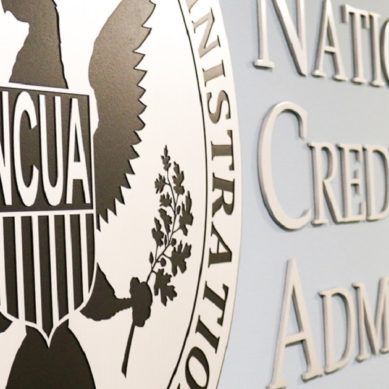Humans are naturally impatient creatures, yet we are forced to wait before we can enjoy the majority of our worldly pleasures. Trips to amusement parks consist of hours upon hours of waiting in lines for thrilling rides that last less than a minute. Going out for dinner requires you to wait to be seated, wait to order, and then wait for your food to arrive before you can feast. You even have to wait a few days for your paycheck to process before it hits your account and gives you access to the funds.
But you aren’t forced to wait anymore. A world exists where payments can be processed immediately. The vision of being able to digitally transfer funds in real-time has finally been realized.
The Clearing House revolutionized the U.S. payment system in November 2017 when they launched the RTP® network, the first U.S. real-time payment rail. The network quickly gained popularity, with over 350 financial institutions currently participating. The Federal Reserve recently jumped on the real-time payments craze by launching their instant payment rail—the FedNow® Service in July 2023.
What are instant payments?
Instant payments, also referred to as real-time payments or immediate payments, are the newest form of payment where funds can be sent, received, and settled within seconds on a 24/7/365 basis. These payments are final and irrevocable, allowing recipients immediate access to the funds. Instant payments in the U.S. are possible through both The Clearing House’s RTP® payment rail and the Federal Reserve’s FedNow® Service payment rail.
Instant payments are not just “faster” payments. There are already several existing payment rails that offer payments faster than normal ACH transfers, which take 1-3 business days. These other payment rails still take at least several hours (up to one business day) to process. Instant payments blow the competition out of the water by completing the transfer and settlement in less than 30 seconds any day, any time.
How do instant payments work?
Unlike all other previous forms of payment, instant payments transfer funds between participants immediately. To send or receive instant payments, both participants must be connected to the same payment rail.
These instant payment rails are “credit-push” only rails, meaning that money will never be debited from an account without the account owner’s request to transfer it elsewhere. You can not only send and receive payments instantly but also send a request to receive an instant payment. Requests for payment can be completed only if the payer has the funds available and approves to send them.
The payment process is relatively simple, and the whole experience occurs in less than a minute. For example, let’s say a participant sends a request for payment, which the requested payer may accept or deny. If the request for payment is accepted, the payment and associated payment message are sent from the sender’s financial institution through the chosen network (RTP or the FedNow® Service), where the network authorizes the funds are available to be transferred and that both accounts exist with a connection to the payment rail.
Once the network has authorized the payment, it sends the funds and payment message to the recipient’s financial institution and settles the payment. The financial institutions involved receive a confirmation verifying the payment, and the funds become available to the recipient for immediate use. If the payment was made through the RTP network, the participating members are also sent a confirmation of the payment. If it was made through the FedNow® Service, payment confirmation to the participating members is optional and based on the financial institutions’ settings.
To clarify, the payment process does not have to begin with a request for payment. A participant can initiate an instant payment without a request by simply choosing to send funds instantly.
Unfortunately, due to the irrevocable nature of instant payments, this form of payment is more susceptible to fraud and cybercrime. The immediacy of the payments makes it more difficult to detect and prevent fraudulent activity before the payment becomes irreversible.
Learn more about the FedNow® Service’s Operating Rules and RTP’s Operating Rules.
What are the differences between RTP and the FedNow® Service?
RTP and the FedNow® Service are very similar payment rails, with just a few differences that will be mostly unnoticeable by end-users. One of the main differences between the two networks is their transaction limits. RTP caps its transactions at $1 million. The FedNow® Service’s current transaction limit is $500,000; however, the Federal Reserve suggests they will raise the transaction limit as the network gets older.
The payment processes for the two networks vary slightly. In order to guarantee the immediacy of the transfer, the FedNow® Service specifies a 20-second time limit for transactions to occur before they will be automatically rejected. RTP does not have a transaction time limit.
The networks also handle their payment confirmation messages differently. All participants, financial institutions and end-users, will be notified when an RTP transfer is complete. On the other hand, the FedNow® Service sends the financial institutions acknowledgments of the settled payment, with the option for financial institutions to be notified of credit/debit entries. The receiver’s financial institution has the option of sending a payment confirmation through the FedNow® Service to the sender’s financial institution. With the FedNow® Service, end-user participants will not be notified unless their financial institution chooses to do so outside of the the FedNow® Service network.
Another difference is the FedNow® Service network is more widely available than the RTP network. To connect to the FedNow® Service network, you have to be an entity authorized to have a master account with a Reserve Bank, but this does not mean you currently need to have said master account at the time you sign up for the network (FRB). The RTP network is available only to insured depository institutions in the U.S. (RTP). Moreover, the FedNow® Service does not require any prefunding, whereas RTP requires participants to prefund their portion of the joint, master Federal Reserve Bank of New York account.
Lastly, the FedNow® Service offers more fraud mitigation features than RTP. Both networks have the ability to encrypt their transaction data to improve security and prevent fraud. RTP offers secure token functionality to protect account credentials, but it is not used by default. On the other hand, the FedNow® Service encrypts all the data, including payment messages, during transit and within the Federal Reserve Banks. As a result, the FedNow® Service participants must manage encryption keys, digital certificates, and public/private key pairs. Aside from encryption, the FedNow® Service helps mitigate fraud by offering negative lists and fields where you can specify conditions in which a transaction will be rejected.
How do I use instant payments?
If your financial institution is connected to either the RTP or the FedNow® Service networks, you have the benefit of being able to participate in instant payments. Neither RTP nor the FedNow® Service have their own end-user payment interface set up for their payment rail, so it might be difficult for you to identify the opportunity to send payments using these rails.
Depending on your financial institution, you may be able to make and request instant payments through your financial institution’s mobile banking app/website if they have configured their own instant payment interface. Otherwise, you will have to rely on context clues to figure out if your payments will use one of the instant payment rails.
Many third-party apps that utilize the instant payment rails will offer multiple options for payment transfers, differentiating them by the speed of the transfer. Phrases like “send instantly,” “send within seconds,” or “instant transfer,” typically refer to payment transfers made through the RTP or the FedNow® Service rails.
Applications like Venmo and PayPal use instant payment networks to offer instant transfers of the funds in your app wallet into your financial institution account. Unfortunately, these instant transfers usually cost a fee, which is typically a percentage taken out of the funds transferred.
See a list of financial institutions participating with RTP or the FedNow® Service.
What’s next?
Instant payments are the newest payment innovation, but there are still great strides to be made before instant payments become a new standard payment in the U.S. Although the RTP network has been up and running for 6 years, it reaches only 65% of U.S. demand deposit accounts (TCH). There are many financial institutions that still need to connect to the payment rail. With the recent emergence of the FedNow® Service, it’s important to get connected to both payment rails to ensure your financial institution has a widespread connection to accommodate payments made through either rail.
RTP and the FedNow® Service have revolutionized the U.S. payment system, but they are limited to U.S. domestic payment transfers. Many other countries have already implemented their own successful real-time payment systems, with Bahrain, Brazil, and Thailand taking the lead in instant payment transactions (ACI). Although the U.S. has just begun its instant payment adoption, international real-time payment transactions will be the next step in the future of payments.


























































